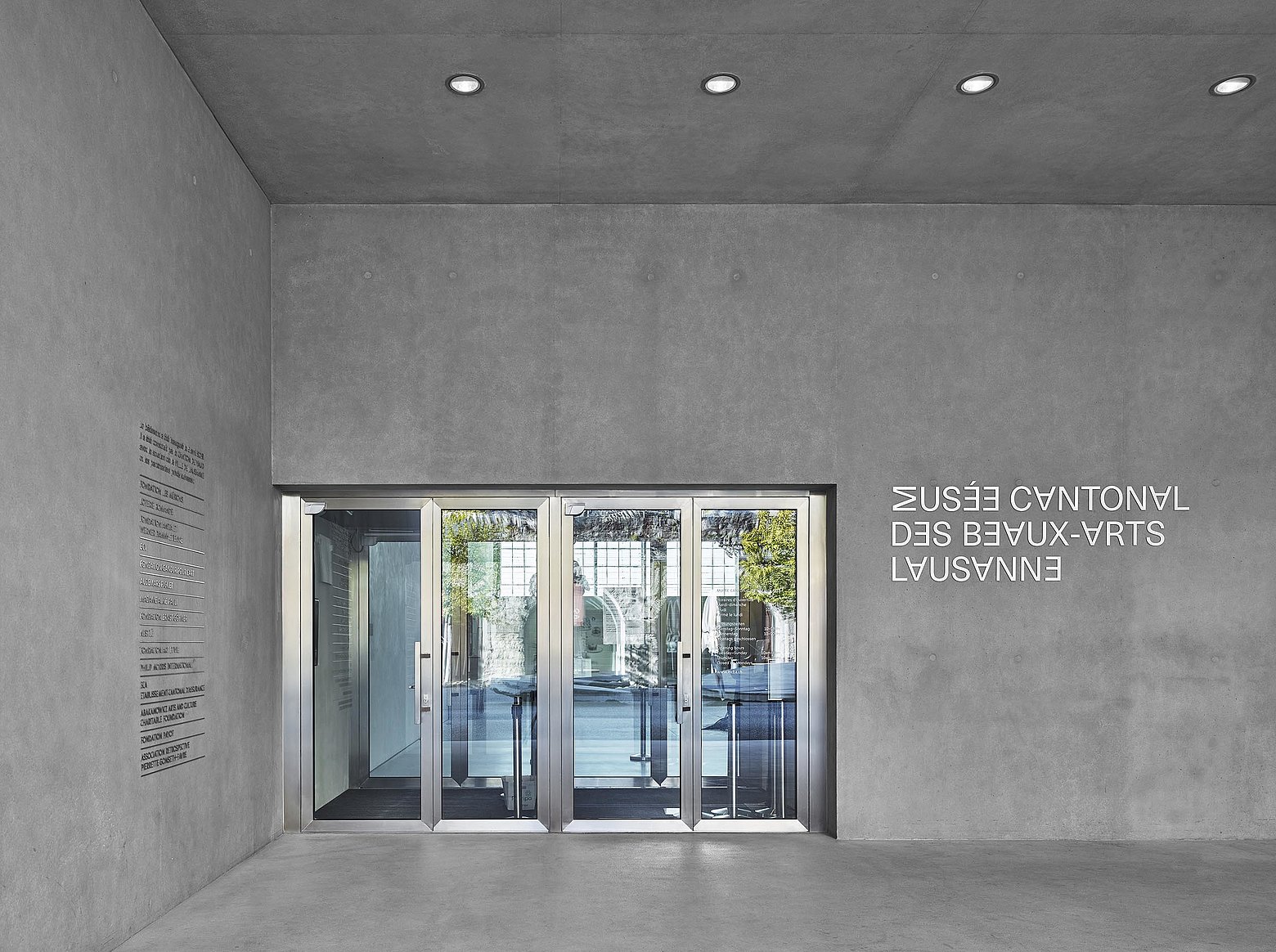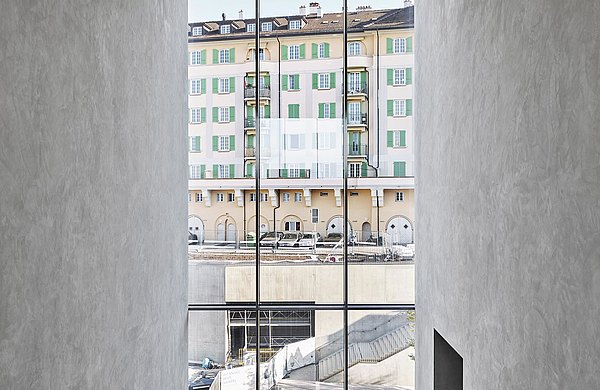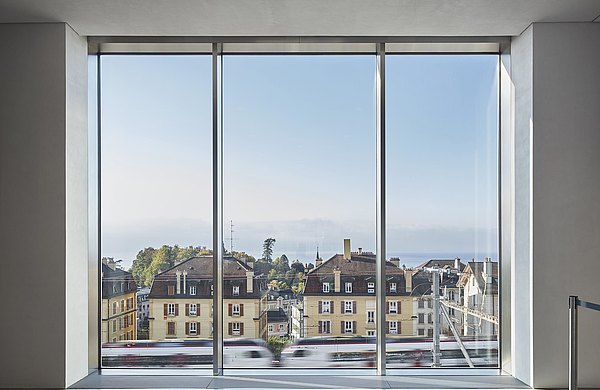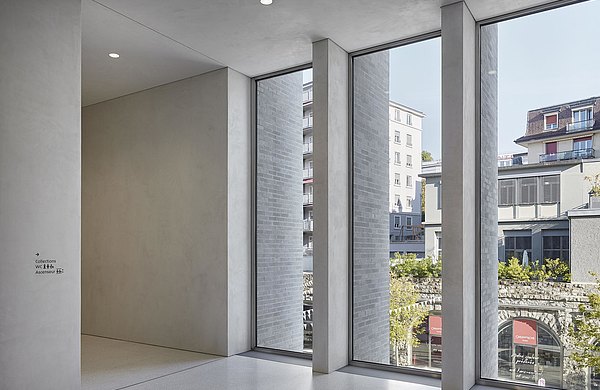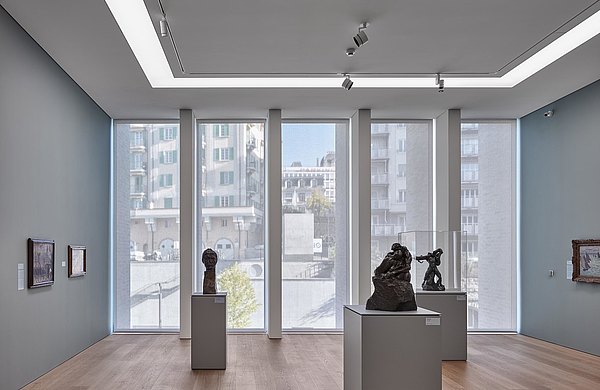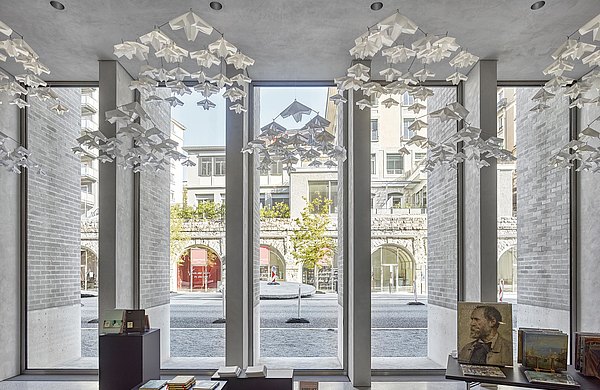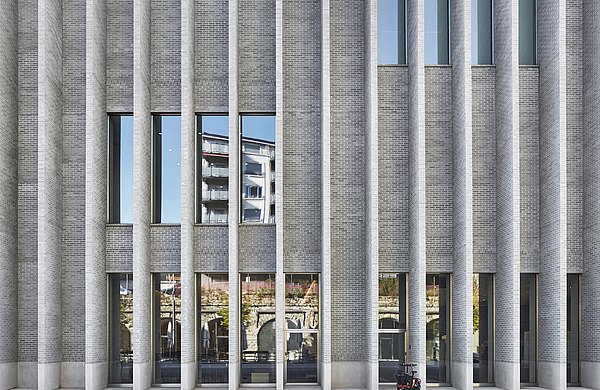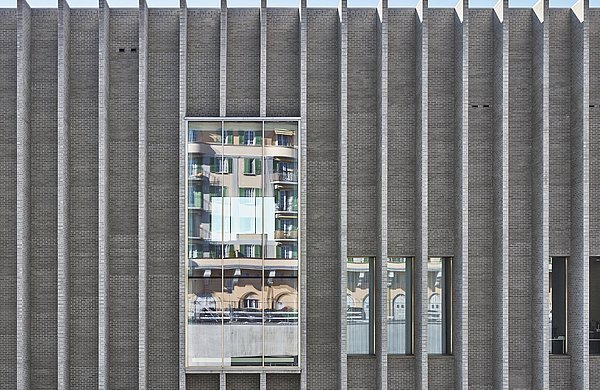MCBA Cantonal Museum of Fine Arts Lausanne
Cantonal Museum of Fine Arts in Lausanne by Barozzi Veiga
A majestic look for a traditional Swiss institution
Cultural buildings continue to be the cornerstones of attractive cities – and sometimes even the catalyst for urban transformation. However, the appeal of a building is often not only down to the content inside, but also the architecture that gives the art or cultural artefacts a worthy backdrop. Often, the architecture itself also becomes one of the city’s main attractions. This was the case at the Cantonal Museum of Fine Arts (MCBA) in Lausanne, where the new building took home a prestigious architecture award just one year after completion. Designed by the Spanish architecture office Barozzi Veiga, this building close to the main station represents the first step on the path towards an arts quarter that should put Lausanne firmly on the map of world-class cultural attractions. The clarity of the design is aided by attractive door and window systems from Forster, which also meet the highest demands in terms of fire protection, burglary resistance and energy efficiency.
From a Renaissance palace to Plateforme 10
Situated along the railway tracks a stone’s throw away from Lausanne’s main station, the new building with its light brick facade is part of a site close to the city centre that will be developed into an arts quarter in the coming years. The museum itself is one of Switzerland’s oldest art institutions. Founded back in 1841, the cantonal museum moved into the Palais de Rumine in 1906. The Palais became too small as far back as the 1920s, with generations of museum directors searching for a solution ever since. In 2009, the canton of Vaud finally made a site available for a new building that was formerly home to a railway depot dating back to the 19th century. In addition to the MCBA, this two-hectare site will soon also house the Museum of Photography and the Museum of Design and Contemporary Applied Arts under the name Plateforme 10.
Clear geometric design with a puristic look
Measuring 145 metres in length and with a height of 22 metres, the sheer size of this imposing building block is immediately apparent. As the rear of the building backs onto the railway tracks, the south facade is almost entirely closed off. The only exception is an old arched window from the former railway depot, which has been integrated here elegantly. The north side faces the city and, as the welcoming face of the arts hub, has a much more open facade design. Large glazed elements offer a view of the building interior and break up the grey brick facade, which forms the building shell in combination with prefabricated concrete elements. The north facade also features striking lesene. These vertical elements span the entire building front, protruding 1.5 metres out of the building shell and spaced 1.5 metres apart. Designed as a shed roof, the roof is equipped with solar panels on the outside while perfectly topping off the striking interior design.
Forster profiles offer the perfect framework for elegant rooms
The outdoor and indoor spaces are linked at the main entrance and foyer by sleek forster unico stainless steel entrance doors and window elements, which comply with protection class RC3 for particularly high burglary resistance. The upper two floors are connected via a staircase running perpendicular to the building length. As a result, the building is divided up into two wings to the left and right of centre. The hall heights of between 4.5 and 5.5 metres give a sense of majestic elegance, which is further underlined by the extremely tall glazed elements with Forster profiles. In the exhibition halls, the architects chose the attractive forster unico glazing system with RC2 burglary resistance, with the forster thermfix light system used in the staircase areas. Manufactured entirely in stainless steel, the profile systems blend in perfectly with the building blueprint thanks to their framework design and also impress with up-to-date thermal insulation values.
Forster profiles also make a further contribution to the overall look of the new arts quarter. The site containing the new buildings for the Museums of Photography and Design – planned for completion in 2022 according to plans from architects Manuel and Francisco Aires Mateus – includes 14 historic arcade arches. These were also closed off with forster unico stainless steel profiles and doors with fixed and bent screen abutments, thus offering space for restaurants, businesses, a documentation centre and an auditorium. This all contributes to the exciting range of uses across the site. Plateforme 10 and the MCBA have already made a huge impact on the Swiss architecture scene. The new museum building was presented with one of Germany’s most prestigious architecture awards – the Fritz Höger Award 2020 for Brick Architecture.
Lausanne, Switzerland
forster unico RC3 door and window systems
forster unico RC2 glazing
forster thermfix light
all elements in stainless steel
Fabricator: Sottas SA, Bulle (museum building)
Joux SA, Le-Mont-sur-Lausanne (arcades)
Architect: Estudio Barozzi/Veiga, Barcelona (structural engineering and master plan for the site)
Xmade, Barcelona/Basel (involved in the design of the brick facade and shed roof)
Building owner: Canton of Vaud, Plateforme 10
Photos: Damian Poffet

